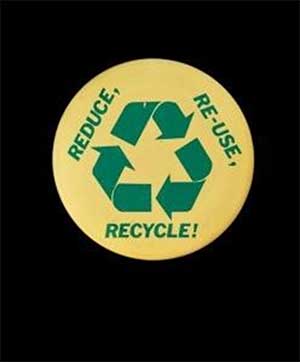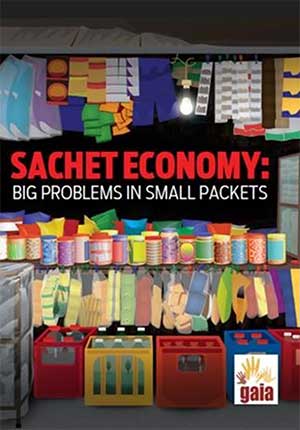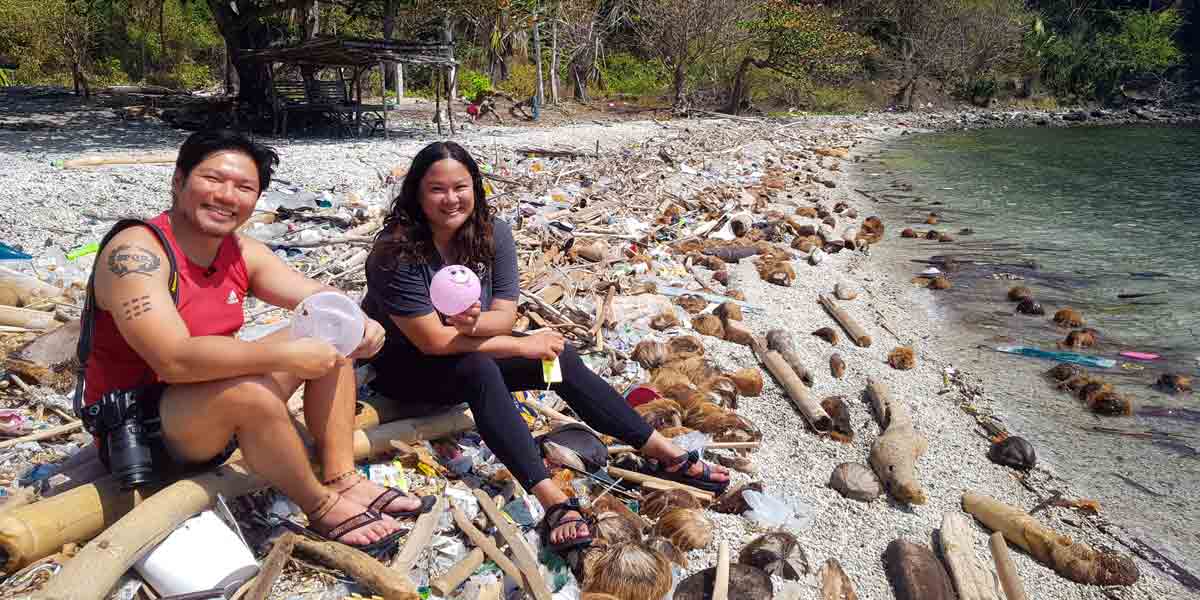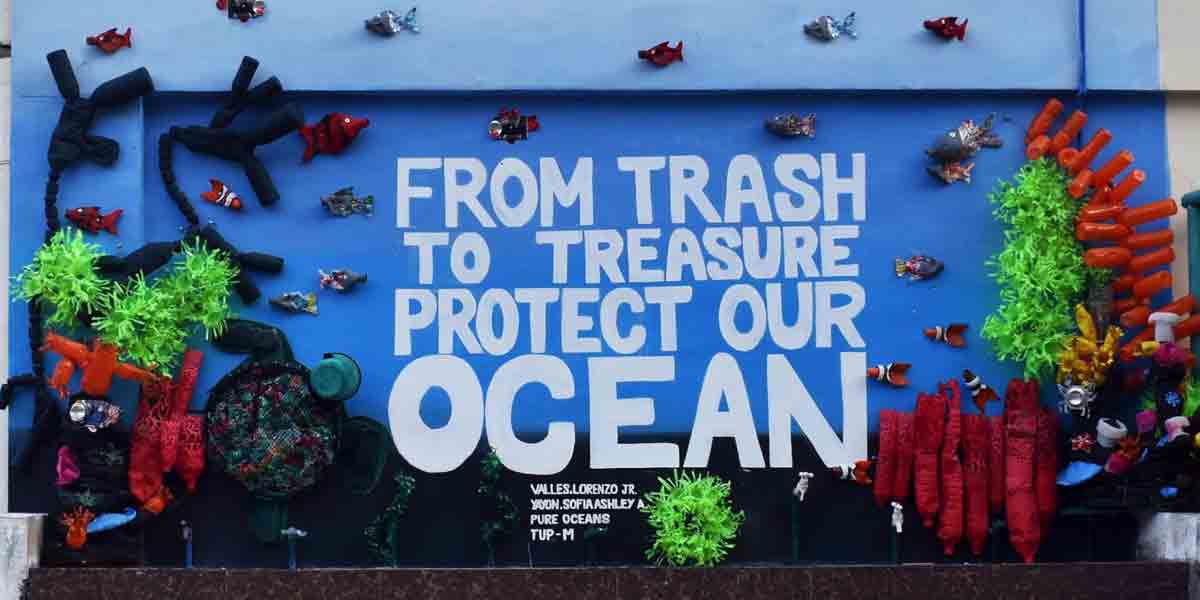
By Institute of Contemporary Economics
90.5%
In 2018, the Royal Statistical Society named as its International Statistic of The Year, the number 90.5%, which represents the proportion of plastic waste that has never been recycled. Imagine that.
Put another way, less than 10% of the plastic that has ever been produced gets recycled. Of the rest, 12% have been burned / incinerated and roughly 79% are either in landfills or the natural environment.
We are all familiar with the reduce, re-use, recycle campaign. Very catchy. Sounds logical. The only thing is it hasn’t worked.
The 3Rs campaign began in the 1970s. Springing out of the first Earth Day on April 22, 1970 (1), the modern environmental movement began putting pressure on various industries, among others, to put a stop to the degradation of our planet.
Reduce, re-use, recycle was a creation of the plastics industry to avoid regulation and sell more plastic
Legislation to curtail the sources of environmental pollution began to gain steam. Faced with this threat to its businesses, the plastics manufacturing industry began to mobilize (2) to
counter threats to ban items which used plastic as packaging, particularly for consumer items such as food. The approach it came up with was recycling.
In the 2020 documentary Plastic Wars (3), Ron Liesemer, a former Du Pont manager, who created and led the recycling effort of the plastics industry said, “making recycling work was a way to keep their products in the marketplace”. It was really more of being able to sell more plastic rather than making recycling work.
The plastics industry knew that recycling was never going to be a viable solution
Even as this myth of recycling was being pushed by the plastics industry, it was already even then obvious that this was unlikely to work. Documents produced by The Society of the Plastics Industry,
Inc., the industry group for the plastics industry, note that “…there is serious doubt that it
(widespread plastic recycling) can ever be made viable on an economic basis”. This points to the fact that a significant number of plastics products are, for all intents and purposes, practically unrecyclable. Sadly, some 50+ years later, this remains the case. All of us were hoodwinked from the very beginning.
Tragically, this continues to this day. The burden of reducing waste was then, and continues to this day, to be pushed to the consumer. Wouldn’t it make more sense for the producers of plastics to stop producing the products that cause all this plastic waste pollution? Wouldn’t that be easier than all this recycling voodoo which has been proven not to work?
Unfortunately, when dealing with big business and industries, the reality is that consumers have virtually no power. Industry controls the messaging, limits the amount of (even appropriate) legislation and regulation and even co-opt some environmental advocates.
The ‘tingi-tingi’ injustice

A report (4) produced by the environmental group, GAIA, estimates that the Philippines uses about 33.5 billion (yes with a “b”) plastic bags in a year. Shocking right? That works out to about 1 plastic bag per Filipino for every day of the year. Then you add the plastic straws, plastic bottles, plastic utensils, etc. Even more shocking – we throw away 60 billion sachets into our landfills and the environment every year. Yup – those seemingly innocuous “tingi-tingi” packaging. Yet you never see those sachets on any awareness campaigns by any environmental group.
Beyond this, products coming in this supposedly affordable packaging actually make the cost per volume more expensive for Filipinos preying on the very consumers that these products are supposedly made to have been more “abot-kaya”.
Coming out of the covid pandemic, most of us will probably (hopefully?) realize that we can live on a lot less than what we think. Consumerism has reached a point where we are actually starting to kill our planet and by
extension, us, without realizing it or paying it no heed.
Development of cheaper plastic alternatives have not been fully explored
But back to plastic – there will always be the argument that if we eliminate plastic as the packaging of choice for consumer items then the prices of the goods themselves will go up. No doubt, plastic remains the cheapest sort of packaging out there. But think about it – it has remained that way because we never really pushed hard enough to the point where innovation towards an economically viable (and environmentally sustainable) replacement needed to be produced. Consumer companies know that they can only sell their products at certain price points. Go beyond that and people will not be able to afford their products. They will find a way to bring prices down and make their products affordable. Why do you think sachets became vogue in the first place?
Even then, the cost of destroying our environment is immeasurable. A lot of it has been the result of greed, that of industry and of us.

Fossil fuel industry is doubling down on plastics and will cause more harm if not stopped
With the focus on reducing fossil fuel use, the oil industry has looked at plastics (a byproduct of this industry) as a growth business. Even as we speak, the oil companies are investing in ethylene production capacity which is expected to increase by 20% between 2020 and 2025 (5). This only further unmasks the deceit of the plastics industry. As pointed out by Ciarán Healy, analyst at the International Energy Agency, “(p)etrochemical overcapacity and the resulting lower prices for
virgin material make life harder for producers of recycled plastics”.
Work towards the total elimination of general use of all plastics not just single-use plastic materials
Don’t get us wrong, the plastics industry has produced products that are beneficial to society. Let them focus on that. They may make less money, but our world will be better for it. In the meantime, policy direction should be towards the elimination of not just single-use plastic products but of all plastic uses. Exceptions could be made for uses for which no viable replacement can be found. In short, plastic use should be viewed as an exception rather than the rule.
Make industry pay for the clean-up
In the interim, the burden of recycling and disposing of existing materials should be placed on plastics producers and users of plastic packaging. This could be done by forcing them to buy back 100% of the plastics that they produce and/or use via new legislation. More than enough damage has been done by the plastics industry to our environment while misleading consumers. It is long past time to make them accountable for these and pay the price for their duplicity and dishonesty.
End Notes
- org. (2024). The History of Earth Day. Earth Day. https://www.earthday.org/history/
- Allen, D., Spoelman, N., Linsley, C., & Johl, A. (2024). The Fraud of Plastic Recycling. Center for Climate Integrity.
- (n.d.). Plastic Wars. In Frontline PBS.
- Liamzon, C., Benosa, S., Alino, M., & Baconguis, B. (2020). SACHET ECONOMY: Big Problems in Small Packets. Global Alliance for Incinerator Alternatives.
- Petrochemical glut makes new plastic cheaper than recycled. (n.d.). Www.ft.com.
https://www.ft.com/content/6b3f4405-a994-4fb1-b667-1f49c5357db8
























